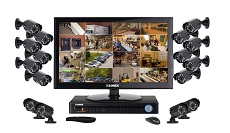
An intrusion monitoring system is designed to assist your business in monitoring and detecting any forms of vulnerabilities, threats, and intrusion against a specific application. A monitoring system is a crucial aspect of protecting your business from theft and ensuring your asset remain safe. The last thing you want is to lose your assets due to insecurity or the use of wrong security apparatus. It’s imperative to work with a security system that will meet your business needs in the best possible way.
Active Monitoring System
Active intrusion monitoring or detection systems are designed to automatically react when any intrusion or suspected attacks have been identified. The active security systems are usually preferable because they allow for a quicker reaction. However, the active security systems have a downside in that these security monitoring apparatus sometimes attack themselves. Moreover, if they have not been well-filtered and set up, they may end up detecting and denying access to authorized individuals such as the employees of an organization.
An example of active monitoring is the use of video surveillance or video security guard. The use of video cameras within your premise allows the security agents to actively monitor your entire facility. In case of any security concerns, the local guards within the area are alerted by the security systems in place. This security approach is advantageous in that it minimizes costs by allowing you to reduce the number of onsite security personnel. As a passive security apparatus, video systems incorporate HD remote cameras that are fitted with speakers and video analytics, as well as sirens to alert those in charge. As opposed to the use of video alone, active monitoring, through the use of video guards and remote camera systems are available for duty throughout. During the off-peak hours such as the holidays, evenings, and weekends, the cameras search for any unusual activities and then notify the station of any potential security threats.
Passive Detection and Monitoring
The passive monitoring systems are the opposite of the active security systems. These apparatus are usually designed to identify and analyze any network activity within the premise. If anything suspicious is identified by the systems, alarms or notifications will be sent to those in charge. The good thing about these systems is that they will hardly attack themselves. However, the passive monitoring security apparatus require additional measures to initiate measures for protecting your business premise. In addition, the passive systems cannot deter crime.
Passive monitoring can be combined with passive alarm systems to detect any unusual movement within your business premise. These apparatus are usually fitted with motion sensors that can read energy changes which take place within range. They function by detecting the heat that living organisms emit.
Choosing between active and passive monitoring will depend on what your specific needs or preferences are. For most businesses, the active security systems are the right options since these detect and hinder any unusual activities within your organization. When you have these systems installed, you will not need to worry about losing your assets to burglary.






